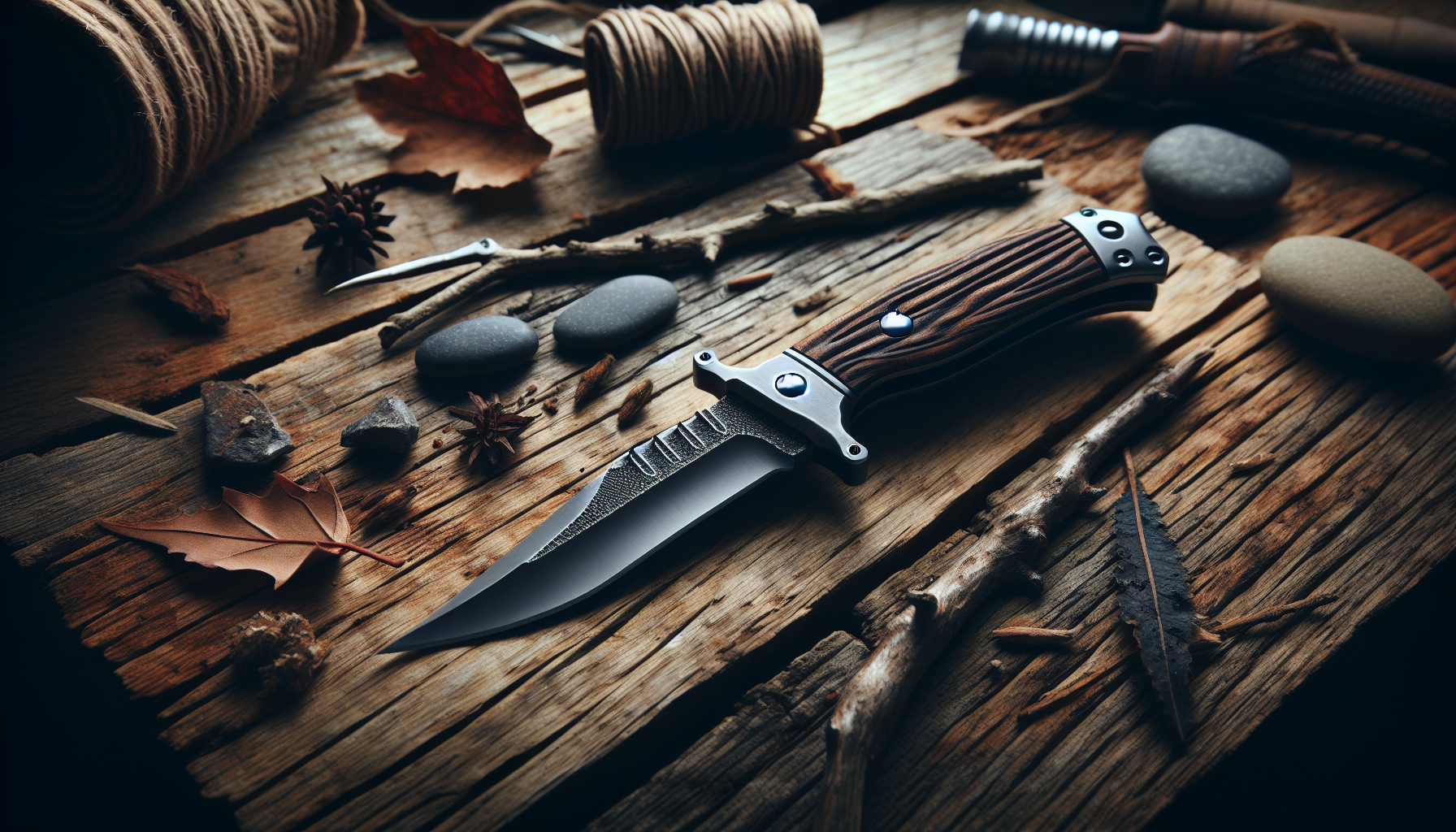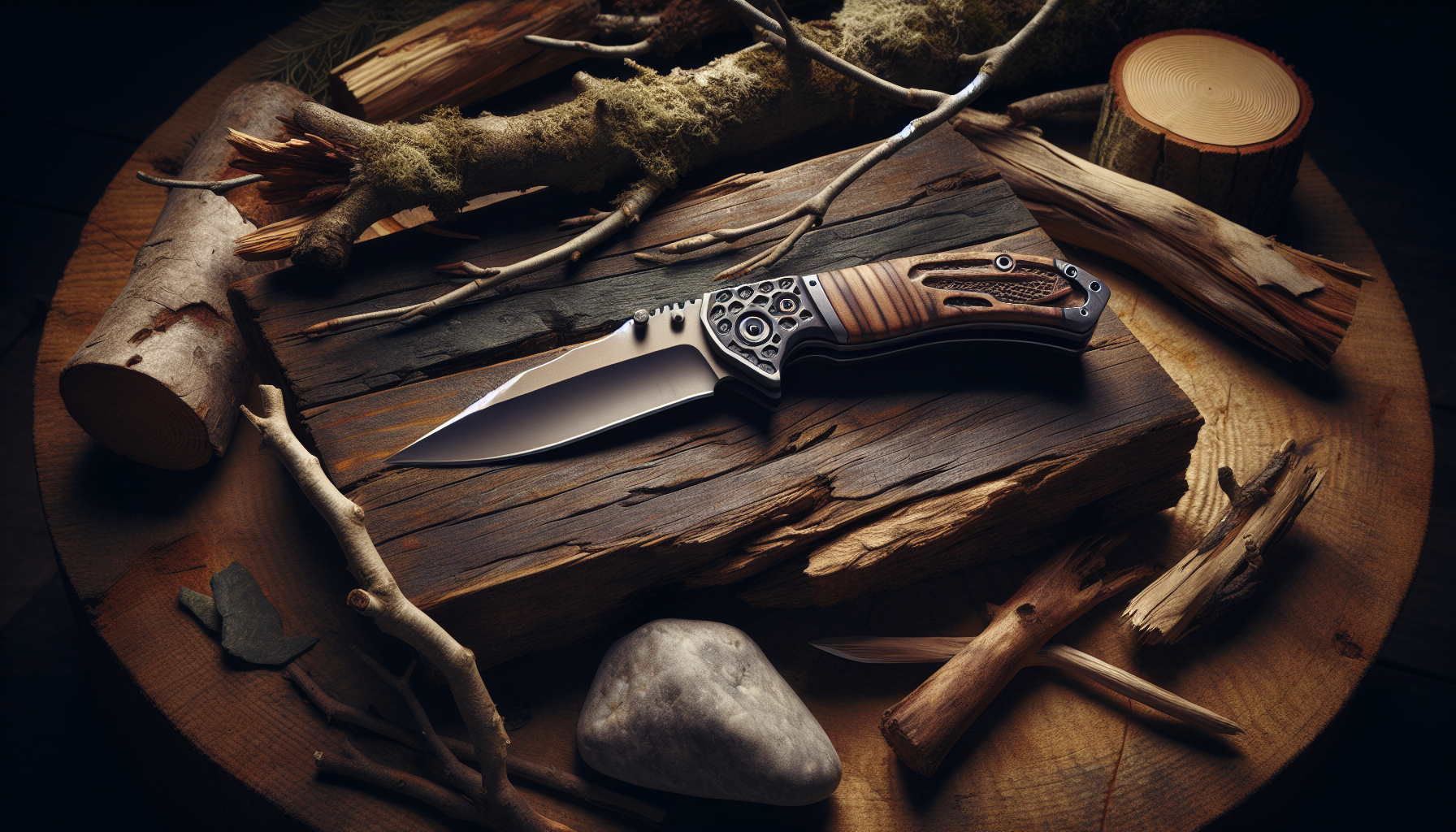Have you ever considered the significance of choosing the right bushcraft knife for your outdoor adventures? Whether you’re an experienced wilderness explorer or a budding enthusiast, the bushcraft knife is an indispensable tool that can significantly impact your survival skills and camping enjoyment.

Understanding the Importance of a Bushcraft Knife
Before diving into the specifics of what makes a bushcraft knife the best, it’s important to understand why this tool is essential for outdoor adventures. A bushcraft knife isn’t merely a cutting tool; it’s an extension of your hand in the wilderness. It aids in everything from food preparation and creating a campsite to crafting other tools and protecting oneself.
What is a Bushcraft Knife?
A bushcraft knife is a versatile tool designed to handle a variety of tasks in the wilderness. Unlike other knives that may serve a single function, a bushcraft knife is built to take on tasks such as carving wood, cutting cords, preparing food, and building shelters. The design often includes a robust, fixed blade made from high-quality metal, ensuring durability and effectiveness in outdoor conditions.
Why Your Choice Matters
Selecting the right bushcraft knife influences your ability to safely and efficiently manage outdoor tasks. A knife that fits well in your hand and is balanced for your strength and skill level will enhance your bushcraft experience. Choose wisely, and you’ll enjoy your adventure that much more, while the wrong choice can lead to unnecessary frustration—or worse, accidents.
Essential Features of a Bushcraft Knife
Choosing a bushcraft knife isn’t just about picking the first option you come across; several essential features come into play to ensure practicality and safety. Understanding these characteristics will help you make a well-informed decision.
Blade Material
The blade material is a crucial factor in your selection. Two commonly used materials are carbon steel and stainless steel.
- Carbon Steel: Known for its sharpness and ease of sharpening. However, it requires regular maintenance to prevent rust.
- Stainless Steel: Offers corrosion resistance and a balance of durability and edge retention but is often harder to sharpen compared to carbon steel.
Blade Design
The blade’s design can influence its utility. Important components include the type of grind (such as Scandi), the blade length, and the thickness.
- Scandi Grind: Popular due to its excellent control and precision in tasks like carving.
- Blade Length: Typically ranges between 3 to 5 inches, providing control and versatility.
- Thickness: Look for a thickness of around 3-4 mm for balance between strength and versatility.
Handle Ergonomics
Comfortable handling is imperative for extended use. Look for a handle that feels secure and is made from materials like rubber, wood, or composite materials that suit different environmental conditions.
Full Tang Construction
Opting for a full tang design wherein the blade extends throughout the handle can provide added strength and durability, reducing the likelihood of breakage under pressure.

Evaluating Top Bushcraft Knives for Outdoor Adventures
Now that you’re aware of the essential features, let’s examine some of the top bushcraft knives that have gained popularity among outdoor enthusiasts.
The Mora Companion Heavy Duty
The Mora Companion Heavy Duty is a breather in simplicity and reliability. Known for its affordable price and excellent functionality, Mora has crafted a knife that many field experts and beginners value for its adaptability.
- Blade Details: Carbon steel blade with a Scandi grind.
- Comfort: Features a high-friction grip ideal for adverse weather conditions.
- Use Case: Suitable for general carving, processing tindering, and basic chopping tasks.
The ESEE 6P
The ESEE 6P is a robust choice, lauded for its durability and comfort, ideal for seasoned adventurers who undertake extensive bushcraft tasks.
- Blade Details: 1095 high carbon steel with a black powder coating.
- Durability: Full tang construction giving it exceptional strength.
- Versatility: With a 5.75″ blade, it accommodates more extensive cutting tasks while remaining nimble for delicate work.
The Benchmade Bushcrafter 162
The Benchmade Bushcrafter 162 brings an element of luxury and expert craftsmanship. This knife is on the higher end of the market, reflecting superior build quality.
- Blade Details: CPM-S30V stainless steel providing an outstanding balance of edge retention and corrosion resistance.
- Handle Design: Attractive and ergonomic G10 handle designed for comfort.
- Intended Use: Perfect for users who value precision without sacrificing quality.
| Knife Model | Blade Material | Grind Type | Blade Length | Price Range | Key Feature |
|---|---|---|---|---|---|
| Mora Companion Heavy Duty | Carbon Steel | Scandi | 4.1 inches | Budget | High-friction grip |
| ESEE 6P | 1095 Carbon Steel | Plain | 5.75 inches | Mid-range | Full tang construction |
| Benchmade Bushcrafter 162 | CPM-S30V | High Flat | 4.4 inches | Premium | Ergonomic G10 handle |
Maintenance Tips for Your Bushcraft Knife
Maintaining your bushcraft knife ensures longevity and performance. Here are some tips to keep your tool in peak condition.
Cleaning and Storage
- Clean Regularly: After each use, clean your knife with mild soap and water. Dry it immediately to prevent rust.
- Avoid Moisture Exposure: Store in a dry place. If your knife comes with a sheath, ensure it’s also dry before storing.
- Oil the Blade: Regularly apply a thin layer of mineral oil to the blade to prevent rust, particularly for carbon steel knives.
Sharpening Your Knife
Correctly sharpening your knife can preserve its blade and enhance performance:
- Use a whetstone or knife sharpener, holding the blade at a consistent angle, usually matching the existing grind.
- Start with coarse grit for dull blades and progress to finer grits for a finished edge.
Safety Tips When Using a Bushcraft Knife
Safety is as imperative as having the right knife. Proper handling techniques can prevent potential injuries.
Handling Techniques
- Always cut away from your body and hands.
- Ensure a stable footing and work surface when cutting.
- Keep your knife sheathed when not in use to prevent accidental cuts.
First Aid Preparedness
Accidents can happen, even to the most experienced outdoors person. Preparing a simple first aid kit that includes bandages, antiseptic wipes, and a small roll of medical tape can prove invaluable.
Making Your Final Decision
Selecting the best bushcraft knife comes down to understanding your needs and evaluating which tool complements them best. Consider the conditions you’ll face, the types of tasks you’ll undertake, and your own comfort and skill with handling different types of knives. Each option offers varying advantages, catered to different levels of experience and types of adventure.
Frequently Asked Questions
Can I use a bushcraft knife for hunting?
Yes, though not specifically designed for hunting, a bushcraft knife can handle skinning and other related tasks if needed.
How often should I sharpen my bushcraft knife?
The frequency of sharpening depends on use. If you notice the blade is no longer cutting as smoothly, it may need to be sharpened.
What is the warranty on these bushcraft knives?
Most reputable manufacturers offer warranties that cover defects in material and workmanship, so it’s essential to check the specifics from the vendor.
The Final Word
The best bushcraft knife for outdoor adventures is one that harmonizes with your usability and outdoor needs. Whether tackling a survival scenario or engaging in leisurely camping, the right knife can make all the difference. Invest time and effort in selecting the ideal tool, and it will serve you well on countless adventures. Selecting wisely will not only enhance your bushcraft skills but also ensure safer and more enjoyable excursions in the great outdoors.


